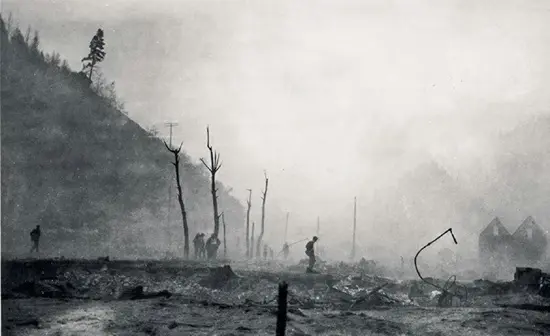The Big Burn of 1910, also known as the Great Fire, stands as a historic event in American environmental history. Wildfires, a natural aspect of terrestrial ecology fueled by plant abundance and atmospheric oxygen, have been occurring since the first land plants appeared on Earth. While natural phenomena like lightning and volcanic activity can trigger wildfires, human activities such as carelessness, arson, and agricultural clearing are also significant causes.
The Big Burn, which raged across Washington, Idaho, and Montana on August 20-21, 1910, is a prime example of the devastating potential of wildfires. Driven by strong, dry winds, numerous smaller fires merged into a colossal blaze that scorched nearly 3 million acres, an area comparable to the state of Connecticut. This incident, the largest wildfire in U.S. history, resulted in the deaths of 87 people, mainly firefighters, and caused extensive damage to cities, homes, farms, and businesses.
This wildfire was a pivotal moment for the nascent U.S. Forest Service, established in 1905, highlighting the challenges of managing forest fires. The Big Burn influenced the development of more consistent firefighting equipment, methods, and training, as well as policies for fire suppression. However, ironically, these fire-suppression strategies have been criticized for potentially increasing fire risks by allowing tinder accumulation on forest floors.
Wildfires, despite their destructive capabilities, play a crucial role in the life cycle of various plant species. For instance, the lodgepole pine cones, common in the western U.S., require the high temperatures of wildfires to open and release seeds.

